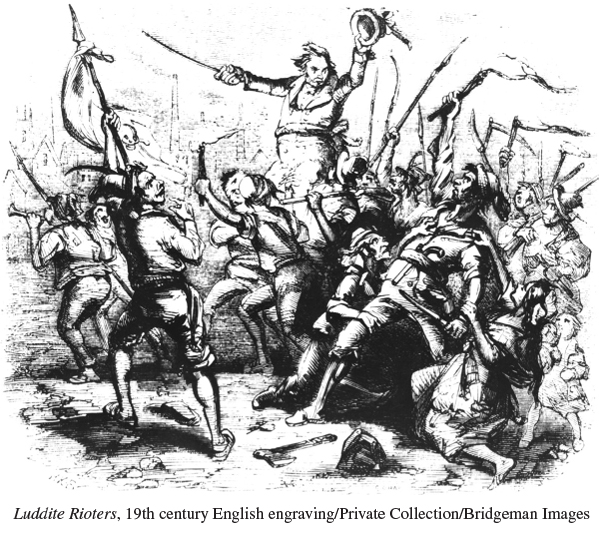Responses to Industrialization
From the beginning, the British Industrial Revolution had its critics. Among the first were the Romantic poets. William Blake (1757–1827) called the early factories “satanic mills” and protested against the hard life of the London poor. William Wordsworth (1770–1850) lamented the destruction of the rural way of life and the pollution of the land and water. Some handicraft workers — notably the Luddites, who attacked factories in northern England in 1811 and later — smashed the new machines, which they believed were putting them out of work. Doctors and reformers wrote of problems in the factories and new towns, while Malthus and Ricardo concluded that workers would earn only enough to stay alive.

This pessimistic view was accepted and reinforced by Friedrich Engels (1820–1895), the future revolutionary and colleague of Karl Marx (see Chapter 21). After studying conditions in northern England, this young son of a wealthy Prussian cotton manufacturer published in 1844 The Condition of the Working Class in England, a blistering indictment of the capitalist classes. “At the bar of world opinion,” he wrote, “I charge the English middle classes with mass murder, wholesale robbery, and all the other crimes in the calendar.” The new poverty of industrial workers was worse than the old poverty of cottage workers and agricultural laborers, according to Engels. The culprit was industrial capitalism, with its relentless competition and constant technical change. Engels’s extremely influential charge of capitalist exploitation and increasing worker poverty was embellished by Marx and later socialists (see Chapter 21).
Analysis of industrial capitalism, often combined with reflections on the French Revolution, led to the development of a new overarching interpretation — a new paradigm — regarding social relationships. Briefly, this paradigm argued that individuals were members of separate classes based on their relationship to the means of production, that is, the machines and factories that dominated the new economy. As owners of expensive industrial machinery and as dependent laborers in their factories, the two main groups of society had separate and conflicting interests. Accordingly, the comfortable, well-
Meanwhile, other observers believed that conditions were improving for the working people. In his 1835 study of the cotton industry, Andrew Ure (yoo-